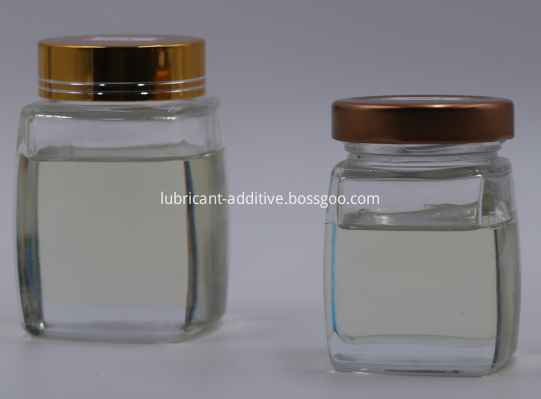I. Explosion hazards at the site of a vehicle fire accident:

1. The tire is prone to explosion when heated;
2. The fuel tank is prone to explosion;
3. Dangerous chemicals or packaging containers are prone to explosion.
II. Requirements for setting up safety warning signs in the handling of vehicle traffic accidents:
1. Ordinary roads should be set up at 100m behind the scene of accident warning signs;
2. Warning signs should be set up 200m behind the site and large anti-collision roadblock facilities should be set up. Conditional large-scale vehicles available for horizontal blocking, setting warning signs at specified distances;
3. In fog or at night, the warning signs should be reflective or light signs. The warning distance should be doubled, and warning signs can be set multiple times.
Third, the safety requirements for the parking of fire engines in the handling of traffic accidents:
1. The normal condition of the fire truck should stop to the right side, especially in reverse and two-way parking;
2. The police lights and double jump lights must be turned on when the fire truck stops at the scene of the accident;
3. Fire-fighting vehicles should stop at the rear of the accident site to adapt to the position and become a 45- degree diagonal road;
4. When dealing with a traffic accident on a chemical dangerous goods transport vehicle, the fire fighting vehicle should stop at the upwind direction of the accident site and stop at a safe location according to the detection distance.
4. The safety measures to be taken when a fire truck must be reversed to the scene of a traffic accident:
The driver should ring an alarm, turn on the light, change the light, and control the speed.
Fifth, to prevent vehicle fuel tank explosion, fire extinguishing agent injection requirements:
1. Cool the unburned accident vehicle fuel tank with spray water;
2. Cover fired fuel tanks and ground flow fires with foam.
6. Safety requirements for opening the hood of a burning vehicle:
After cooling with a spray jet, firefighters can slowly open the hood under the cover of a water gun to avoid being burned by a flame.
Seven, the safety requirements of the demolition operations:

1. Do your own protection, such as helmets, gloves, goggles, to prevent the debris from splashing when wounded;
2. Use water gun cover to prevent sparks and trigger secondary fires;
3. The accident vehicle can be dismantled after taking firm and fixed measures.
VIII. At what locations on the accident disposal site there are no personnel to stay:
1. It is strictly forbidden to stand at the tipping surface of an accident vehicle;
2. It is forbidden to stand under the lifting arm of large lifting equipment;
3. Tow ropes (appropriate range) is strictly prohibited;
4. When disposing of liquefied petroleum gas leaks, it is forbidden to stand on sewers.
9. When fixing a trapped person at the bottom of a vehicle, what fixed measures should be taken for the accident vehicle:
1. must pull up manually brake;
2. The gear must be placed in the gear;
3. Wheels must be filled with items such as sleepers;
4. Reliable fixed measures should be taken opposite the apex of the vehicle's reliable support.
X. Safety requirements for operations under suspended accident vehicles:
1. Confirm whether the tonnage of lifting or lifting equipment is within the specified range;
2. Apply hard objects such as sleepers before lifting to work under lifting vehicles;
3. Strictly control the number of workers entering the vehicle.
11. In order to prevent secondary damage of the rescued person, what protective measures shall be taken for the location of the accidental vehicle demolition:
1. Before breaking the windshield of an accident vehicle, thick quilts or clothing should be placed on the vulnerable parts of the trapped person's face, hands, etc.;
2. Demolition accident After the metal of the vehicle is constructed, the demolition site should be banded or thick quilts, clothes, etc. should be added.
The information in this article comes from the Internet and was reorganized and edited by China Rescue Equipment Network.
Product
Introduction
This product is
used with antiwear and Ep Additive to gain maximum load carrying ability and EP
performance, and it has good lubricity and strong adhesion. It can solely
blended with other synthetic material, also can be used with PAO and mineral
Base Oil.
Product
Specifications
Item
KV
KV
Viscosity Index
Pour Point
Flash Point
Acid No.
40℃(mm2/s)
100℃(mm2/s)
(VI)
℃
℃
mgKOH/g
M30
27.10
4.87
101
-54
231
0.05
M40
38.44
5.38
58
-48
216
0.05
J460
510
50
158
-35
280
0.05
J680
670
58
150
-29
280
0.05
J1500
1450
115
175
-26
250
0.05
J4600
5100
285
190
-14
250
0.05
J15000
15000
1000
280
-15
257
0.18
J17000
17000
1215
300
-15
257
0.18
J20000
20000
1415
308
-13
257
0.18
J25000
25000
1665
308
-10
250
0.18
Application
and recommended treat rate
Gear Oil
98% max
Wind turbine
gear oil
98% max
Synthetic open
type gear oil 98% max
Features
Good solubility
with additive. Increase oil polarity.
Increse oil
affinity for metals. High thermal oxidant stability.
Can be used as
Friction Improver with good anti-friction performance.
Excellent low
temperature performance.
Increase the power
on performance for engine oil under low temperature.
Increase oil life.
It is biodegradable.
Package,
storage and transportation
Packaged in
plastic drum, N.W. 200KGS/drum.
Stored and
transported as non-dangerous goods, stored in cool, dry and ventilated place.

Gear Oil,Base Oil For Gear Oil,Gear Specialty Base Oil,Specialty Synthetic Base Oil
Zhengzhou Chorus Lubricant Additive Co.,Ltd. , https://www.cn-lubricantadditive.com